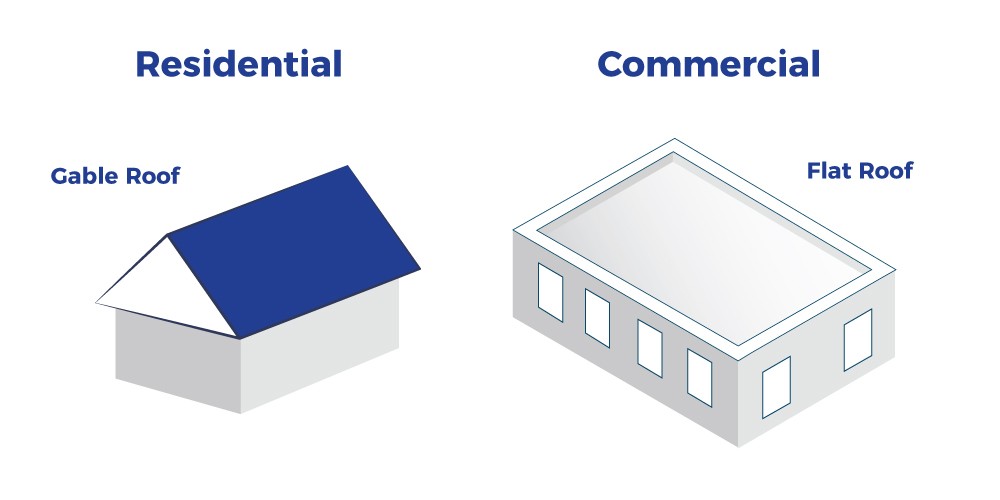Have you been wondering: Do I need to replace my commercial roof or repair it? You’ve come to the right place.
A commercial roofing system is a vital component of your commercial building, safeguarding it against various environmental factors. Over time, however, wear and tear can take a toll on your roof, leading to visible damage and potential leaks.
Knowing whether your roof needs a repair or a complete replacement can save you time and money. So how can you tell? Here are common signs to look for, the factors to consider when making the decision, and when it’s time to call a professional commercial roofing contractor.
What is a commercial roof?
First things first, what makes a roof a commercial roof? Also known as a flat or low-slope roof, a commercial roof is a type of roofing system commonly used on nonresidential buildings such as office complexes, warehouses, retail stores, and industrial facilities. Unlike residential roofs, which often have steep slopes or gables—sloping sides that form a triangle—commercial roofs typically have a low or flat slope.

Commercial roofs serve the essential purpose of protecting the interior of your building from various environmental elements, including rain, snow, hail, and sunlight. They are designed to be durable and long-lasting, and to require minimal maintenance.
Commercial roofs may also include features such as roof coatings, insulation, and drainage systems to enhance their energy efficiency, weather resistance, and longevity. Proper installation, maintenance, and regular inspections are essential to ensure that your roof continues to perform its protective function effectively and to extend its lifespan.
Common signs a roof repair is necessary
- Minor issues: If you notice small issues like water that remains on your roof for more than two days, growth on the roof, cracked flashing (the thin piece of metal used to seal around edges), or minor leaks, these can typically be fixed with a simple commercial roof repair. Promptly addressing these issues can prevent them from escalating into larger problems.
- Extent of the damage: If the visible roof damage is limited to a specific area and does not cover a significant portion of the roof, repair may be a cost-effective solution. A professional commercial roofing contractor can assess the damage and determine whether a repair is sufficient.
Common signs a roof replacement is necessary
- Recurring roof leaks and water damage: If you have leaks that keep coming back or water damage inside your building, it may be an indication that your roof system has surpassed its useful life and requires a replacement. Repeated repairs may become costlier in the long run, and a new roof may be a more practical solution.
- Type of roofing and age: The type of roofing material used on your commercial building affects its longevity. For instance, flat roofs and shingle roofs can last anywhere from 15–30 years and metal roofs can last up to 50. If your roof has reached its expected lifespan or is approaching it, a full roof replacement is advisable to avoid potential risks or costly repairs.
Wondering which type of material you should choose for your new roof?
Read: TPO vs. EPDM: Which roofing is best for you?Uncommon signs your commercial roof needs updated
- Energy bills increase: If you notice a sudden spike in your energy bills, it might be due to insulation problems caused by roof damage. Addressing the roof issues promptly with a repair or replacement can restore the building’s energy efficiency.
- Interior mold growth: Unseen leaks can lead to mold growth inside the building. If you notice mold spots or musty odors, it could be a sign that your commercial roof needs immediate attention.
How to decide between a repair and a replacement
When weighing the difference between minor repairs and a full-blown replacement, here is a recap of factors to consider:
- Extent of damage: If the damage is isolated and limited, repairs may be sufficient. However, if the damage is widespread and severe, a full roof replacement might be more cost-effective in the long run.
- Age of the roof: If your roof is approaching the end of its expected lifespan, investing in a replacement can provide a longer-term solution.
- Budget: Evaluate your budget and the cost of repairs versus a replacement. While replacements may be a significant upfront expense, they can save you money on frequent repairs in the future.
How long should a commercial roof last?
The lifespan of a commercial roof depends on various factors, such as the type of roofing material, the quality of installation, and the level of maintenance. Typically, flat roofs can last around 15–30 years, while sloped roofs can last 20–50 years. Regular maintenance can extend your roof’s lifespan.
What is the cost difference?
The cost of performing a commercial roof repair varies depending on the extent of the damage, materials needed, and labor costs. A full roof replacement will involve higher upfront costs, but can offer more long-term value and performance.
When determining between the two, Hopkins can help weigh the variables before giving a solution.
When to call a roofing contractor
If you notice visible roof damage, experience leaks, or have concerns about your commercial roof’s condition, it’s essential to contact a professional commercial roofing contractor like Hopkins. We will use our 64+ years of expertise to help you assess the extent of the damage and recommend the most suitable course of action.
Find out how long it takes to get a flat roof estimate.
Maintaining your roof to keep it in good condition is crucial to protecting your building and its occupants. Regular inspections, prompt repairs, and professional advice from a professional can ensure the longevity and efficiency of your commercial roofing system.
Remember, a well-maintained roof not only safeguards your property but also adds value to your business and gives you peace of mind knowing you are protected from the elements.
Call Hopkins Roofing today and one of our consultants can help guide you toward the best roofing solution.



